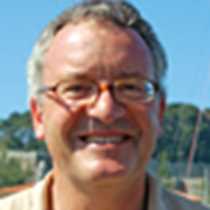Kiel Canal
An hour before breakfast, our Expedition Leader woke us gently with the news that we had secured an early slot to enter the Kiel Canal. We had sailed overnight from Copenhagen and the Kiel Canal provides a rapid transit from the Baltic to the North Sea, a saving of some 519 kilometers (approx. 322 miles) over the route around Jutland.
The canal was opened in 1895, after eight years of work involving some 9,000 workers. It is 98 kilometers (approx. 61 miles) in length. As is often the case with such projects, it was prompted by military considerations.
A newly united Germany wanted to be able to move its fleet quickly and securely between the Baltic and the North Sea arenas. The Jutland peninsula is not only storm prone but was also foreign waters to the German fleet of the time. Kaiser Wilhelm II made the first transit from Brunsbüttel to Holtenau, and the canal was duly named after him.
As the arms race gathered momentum in the years leading up to the outbreak of the Great War in 1914, the Kiel Canal was enlarged to allow the passage of the new Dreadnought battleships, work that involved the installation of two larger canal locks at Brunsbüttel and Holtenau. After the Great War, one of the clauses in the Treaty of Versailles required the internationalizing of the canal but left it under German administration. Adolf Hitler’s Germany repudiated that international status in 1936 but it was subsequently restored following their defeat in the Second World War.
It was after the Second World War also that the name Kaiser Wilhelm Kanal was changed, in German to Nord-Ostsee Kanal and in English to the Kiel Canal. Today the Kiel Canal is the most heavily used artificial seaway in the world: in the year 2007, for example, some 43,000 ships passed through the canal.
In the course of our canal transit we had a presentation on the Indo-European language family from Tom Heffernan and, upon our emergence into the North Sea, a presentation on some of the literary highlights of the cultures we will be encountering from Laura Fraser.
More cultural associations were highlighted with German sausage and beers on the aft deck, in place of afternoon tea, and an introduction to the evening’s complimentary wines with dinner from our wine expert, Mark Fincham.
There was a frisson of excitement among the birders with sightings of a great skua and red-throated divers upon our entry into the North Sea. As we sailed past Heligoland, birthplace of our Captain, we prepared for his Welcome Dinner, eagerly discussing the many options for the following day in Amsterdam.




